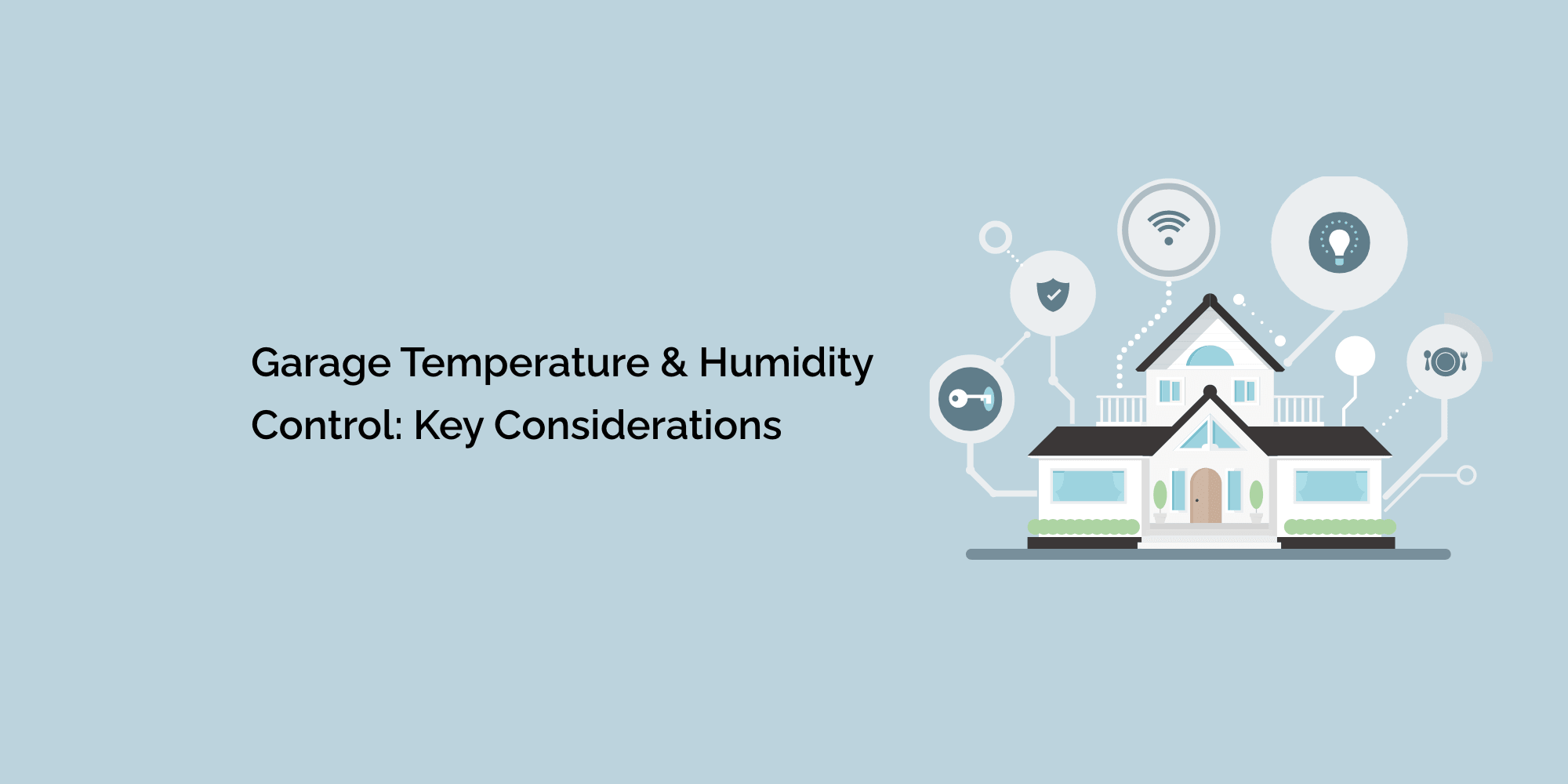Maintaining optimal temperature and humidity levels in your garage is essential for the longevity and functionality of both stored items and the overall structure. Whether you use your garage as a workshop, storage space, or parking area, understanding the key considerations for temperature and humidity control is crucial.
This blog will explore various factors that affect garage climate, discuss the importance of temperature and humidity control, and provide practical tips to help you create a comfortable and conducive environment.
Understanding the Factors Affecting Garage Climate
-
Location and Climate: The geographical location of your garage plays a significant role in determining its temperature and humidity levels. Climate conditions, such as extreme temperatures, high humidity, or frequent temperature fluctuations, directly impact the garage environment.
-
Insulation and Ventilation: Proper insulation and ventilation are critical for maintaining a consistent climate in your garage. Insulation helps regulate temperature, while ventilation prevents moisture buildup and improves air circulation.
-
Garage Door: The garage door is a vital component that affects temperature and humidity control. Poorly insulated or damaged garage doors can allow outdoor air, moisture, and pests to enter, leading to fluctuations in climate conditions.
-
Appliances and Equipment: The presence of appliances, such as washers, dryers, or refrigerators, and mechanical equipment, like water heaters or furnaces, can generate heat and affect humidity levels within the garage.
II. The Importance of Temperature and Humidity Control
-
Protecting Belongings: Temperature and humidity fluctuations can damage items stored in the garage, including electronics, tools, and furniture. Extreme heat or cold, as well as excessive moisture, can lead to warping, rusting, mold growth, and deterioration.
-
Preserving Vehicle Health: If you use your garage to park vehicles, maintaining appropriate temperature and humidity levels is crucial for preserving their performance and longevity. Extreme temperatures can affect battery life, tire pressure, and fluid stability, while high humidity can lead to corrosion and rust formation.
-
Comfort and Safety: An improperly regulated garage climate can be uncomfortable to work or spend time in. Extreme temperatures and excessive humidity can make it difficult to concentrate, work efficiently, or perform tasks safely.
III. Practical Tips for Garage Temperature and Humidity Control
Insulation and Weatherstripping:
Ensure your garage is properly insulated, including walls, ceiling, and garage door. Install weatherstripping around the garage door to seal gaps and prevent drafts.
Ventilation and Air Circulation:
Install vents or fans to improve airflow and prevent moisture buildup. Consider using a dehumidifier in humid climates or during periods of excessive moisture to regulate humidity levels effectively.
Garage Door Maintenance:
Regularly inspect and maintain your garage door to ensure it remains properly sealed and insulated. Replace damaged weatherstripping and consider upgrading to an insulated garage door if needed.
HVAC System Integration:
If your garage is connected to your home's heating, ventilation, and air conditioning (HVAC) system, consult a professional to assess the feasibility of extending the system to regulate the garage climate.
Temperature Monitoring:
Use a digital thermometer or a smart thermostat to monitor and maintain consistent temperature levels. Set temperature thresholds to trigger alerts if the temperature deviates beyond a certain range.
Moisture Control:
Keep the garage dry by promptly fixing leaks, using moisture-absorbing products like desiccants or silica gel packets, and ensuring proper ventilation to prevent excessive humidity.
Organization and Storage:
Properly organize and store items in the garage to allow for better air circulation. Avoid blocking vents or airflow by placing items too close to walls or in crowded configurations.
Regular Cleaning and Maintenance:
Regularly clean your garage to remove dust, debris, and potential sources of moisture. Perform routine maintenance on appliances, equipment, and HVAC systems to ensure their proper functioning and minimize the risk of temperature or humidity fluctuations.
Exterior Considerations:
Pay attention to the exterior of your garage as well. Ensure proper drainage around the garage to prevent water accumulation near the foundation. Consider installing gutters and downspouts to divert rainwater away from the structure.
Insulated Windows and Skylights:
If your garage has windows or skylights, consider installing insulated versions or adding window film to improve insulation and reduce heat transfer.
Garage Usage:
Consider the purpose and activities conducted in your garage when determining temperature and humidity control requirements. For example, a workshop with power tools may require additional ventilation to remove fumes and excess heat.
Smart Home Automation:
Explore smart home automation options to remotely monitor and control your garage's temperature and humidity. Smart thermostats, sensors, and compatible apps can provide real-time data and allow you to adjust settings from anywhere.
IV. Energy Efficiency and Cost Savings (Word Count: 400)
-
Energy-Efficient Appliances: Consider energy-efficient appliances and equipment for your garage, such as LED lighting and energy-star rated appliances. These choices can help reduce energy consumption and lower utility bills.
-
Sealing and Insulation: By properly sealing and insulating your garage, you can minimize energy loss and improve overall energy efficiency. This will result in lower energy costs and a more sustainable garage.
-
Time-Based Heating and Cooling: If you have an HVAC system in your garage, use programmable thermostats or timers to adjust temperature settings based on your usage patterns. This will optimize energy usage and save money.
-
Natural Lighting: Make use of natural lighting during the day to reduce reliance on artificial lighting. Consider installing skylights or windows strategically to maximize the amount of natural light entering the garage.
Conclusion
Maintaining optimal temperature and humidity levels in your garage is crucial for protecting stored items, preserving the condition of your vehicles, and ensuring a comfortable working environment. By considering factors such as insulation, ventilation, garage door maintenance, and appliance usage, you can achieve effective temperature and humidity control.
Implementing practical tips like proper organization, regular cleaning, and smart automation can further enhance your garage's climate control capabilities. Remember, a well-regulated garage not only safeguards your belongings but also promotes safety, productivity, and cost savings in the long run.








